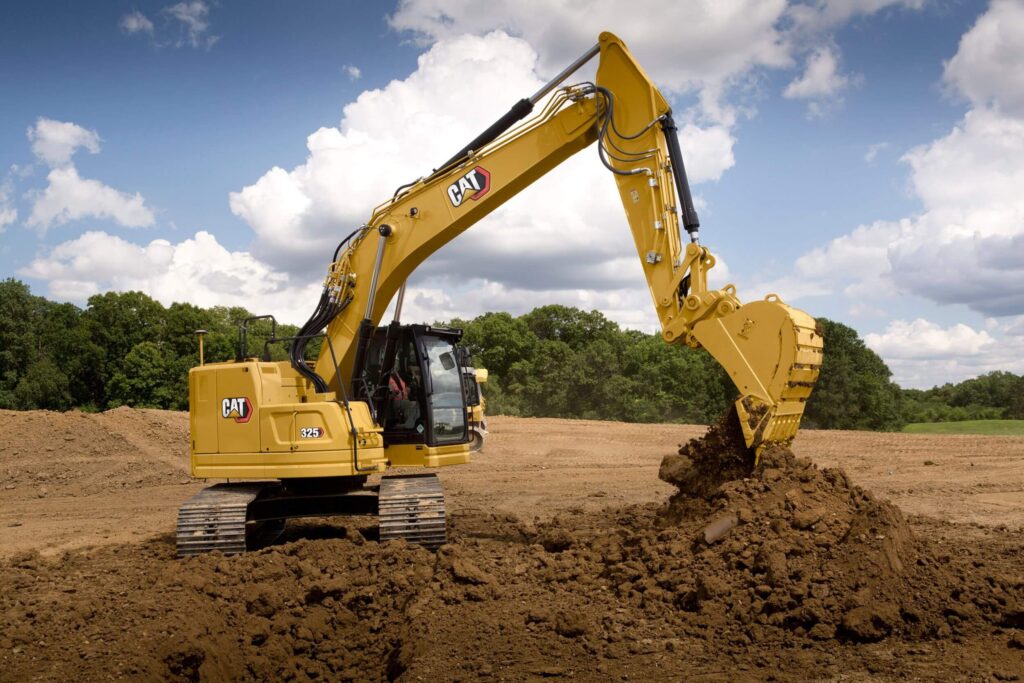Excavators of different tonnages have different applicability in different work scenarios. According to factors such as the space of the work site, the operating requirements, and the excavation depth,choosing the right tonnage can improve work efficiency and safety. The following are typical working scenarios for excavators of different tonnages:
Small Excavators (< 10 tons)
Applicable scenarios:
Urban construction and small earthworks:
Small excavators are usually small in size and suitable for working in urban environments. They can flexibly travel through narrow streets and communities for infrastructure construction, pipeline laying.cable laying, etc.
Landscaping:
In gardening projects, small excavators are often used for tasks such as trenching, pit digging, and tree transplanting. Due to their small size and light operation, they are particularly suitable for delicate operations.
Highway construction:
Small excavators are suitable for more delicate work in highway construction, such as roadbed finishing.ditch excavation, etc.
Underground pipeline installation:
Small equipment can perform fine excavation in a limited space, suitable for laying and maintaining underground cables and pipelines.
Features:
High mobility, suitable for narrow workplaces. Flexible operation, capable of handling delicate excavation tasks.
Medium Excavator (10-20 tons)
Applicable scenarios:
Urban construction and infrastructure:
Applicable to urban construction, development of large residential areas, road and bridge constructionetc. Medium excavators can handle a large range of earthworks while performing precise operations in limited spaces.
Small mining and mining operations:
In some small mines or open-pit operations, medium excavators are often used for tasks such as excavation of pits, material loading and unloading, and transportation.
Water conservancy prolects:
In water conservancy projects such as dams and river management, medium excavators can undertake tasks such as clearing sediments, digging ditches, and building dams.
Civil engineering projects:
Applicable to foundation treatment, earthworks for large building foundations, etc., which require a large operating range and medium excavation depth.
Features:
It has high work efficiency and can adapt to a variety of working environments. lt is relatively balanced and can take into account both precise operations and large-scale earthwork movement.
Large Excavators (20-40 tons)
Applicable scenarios:
Mining:
Large excavators are usually used for earthwork handling and ore mining in open-pit mines, and can provide strong power for long-term and high-intensity work. They can handle large-scale excavation and material handling tasks, and are suitable for mining, oil mining and other fields.
Large earthwork projects:
Large earthwork projects (such as dam construction, large underground projects, etc.) require high-power and high-efficiency equipment. Large excavators can carry out large-scale earthwork operations in these environments to meet the needs of large earthwork volume and deep operation depth.
Construction sites and heavy infrastructure:
In some heavy infrastructure construction projects (such as highways, bridges, tunnels, etc.), large excavators are required for earthwork excavation and foundation pit operations.
Port and wharf construction:
In port construction, large excavators can handle a wide range of earthwork projects, such as excavation,filling and yard preparation of embankments and docks.
Features:
Powerful excavation capacity, capable of handling large-scale earthwork. High operating efficiency,suitable for heavy earthwork and mining operations.
Ultra-large Excavators (>40 tons)
Applicable scenarios:
Open-pit mining:
Ultra-large excavators are usually used for large-scale earthwork operations in open-pit mines and can handle large amounts of mineral resources such as ore and coal. They have a wide working range and a large operating depth, and can carry out efficient ore mining in mines.
Large-scale water conservancy projects:
In the construction of large-scale water conservancy facilities (such as dams and irrigation systems),ultra-large excavators can be used for large-scale earthwork operations, underground facility excavationand other tasks.
Large-scale infrastructure construction:
Earthwork operations in large-scale highways, high-speed railways, cross-sea bridges and other projects usually require ultra-large excavators for deep excavation and efficient transportation.
Features:
Applicable to large-scale earthwork projects and heavy mining tasks. lt has extremely strong excavation capabilities and high efficiency, and can cope with harsh operating environments.
Super Heavy Excavator ( >50 tons)
Applicable scenarios:
Deep foundation pit operation:
Super heavy excavators are suitable for earthwork excavation and support work in projects such as deep foundation pits and subway tunnels. They can perform precise excavation operations in extremely deep working environments.
Super large mining:
Excavators of this tonnage are mostly used in super large mines and heavy mining, especially in material handling and ore excavation in mining areas, providing strong support.
Features:
Strong earthwork and ore handling capabilities, suitable for super large-scale earthwork and mining.With extremely high excavation depth and work efficiency.
Summary: Choosing an excavator of the right tonnage can significantly improve work efficiency, ensure construction safety, and reduce operating costs.


